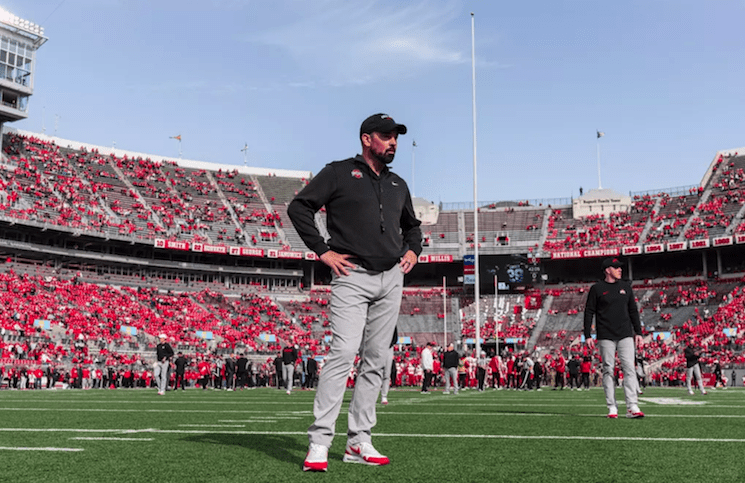
The Lady Vols basketball program is currently in an unprecedented situation. After establishing itself as the name of women’s basketball over the last three decades, the program has reached a historic low in the 2015-16 season.
When the newest AP Poll came out on Monday, February 22, a familiar name wasn’t listed in the poll. And that name was Tennessee.
For the first time since February 10, 1985, the Lady Vols failed to be ranked in the AP Poll. That snapped a streak of 565 consecutive weeks that the Lady Vols had been ranked in the poll, the longest ever in women’s basketball history. The Lady Vols fell out of the poll because of their loss to a then 8-18 LSU squad on Sunday afternoon that dropped the Vols to 16-11 on the season and 7-7 in conference play. Those 11 losses tie the school’s record for most losses in a season, and the seven SEC losses are the most in a single season in program history.
And the Lady Vols still have two regular season games remaining as well as any postseason play they’ll be in.
The Lady Vols’ previous low in terms of wins and losses and postseason success came in the 2008-09 season when Pat Summit’s defending National Champion squad went 22-11 and lost in the first round of the NCAA Tournament for the first time in school history. But the current season is threatening to eclipse that one as the worst in program history.
Tennessee appears well on its way to winning fewer than 20 games in a single season for essentially the first time ever. The only other times the Lady Vols haven’t won 20 or more games in a season was the program’s first two seasons in existence from 1974-76. Otherwise, the Lady Vols have won at least 22 games since the 1976-77 season.
Most of the blame for the “downfall” of the Lady Vols program has been placed on head coach Holly Warlick. And a lot of the criticism is fair when you look at the stats and talent on the team.
Warlick has been the head coach of the Lady Vols for the last four years, and her first three seasons were mostly positive with some hiccups along the way. Warlick increased her win total every season in her first three years and won the SEC regular season crown in her first and third seasons and the SEC Tournament Championship in her second.
But the Lady Vols will always be judged by their postseason play, and in that regard Holly Warlick had yet to live up to the program’s expectations.
Warlick’s Lady Vols squads have made it to two Elite Eights in her three seasons but have never made it further than that. And for a program that’s made it to 17 Final Fours and won eight National Titles, just getting to the Elite Eight is falling a little short of your goal.
But that all looked to change at the beginning of the 2015-16 season when Warlick would have her most talented team since taking over in 2012. With former ACC Player of the Year Diamond DeShields set to join the roster after sitting out a year after transferring from North Carolina following her freshman season in 2012-13, the Lady Vols boasted some serious firepower at guard along with considerable height with 6-foot-6 Mercedes Russell, 6-foot-3 Nia Moore, and 6-foot-2 Bashaara Graves.
Instead, it’s been one of the worst seasons in program history. And it’s compounded by the fact that this team is the most talented group of players Warlick has had since taking over as head coach.
While Warlick certainly deserves criticism and blame for the situation the Lady Vols are in right now, looking at the bigger picture reveals other factors that are playing into Tennessee’s downturn in women’s basketball.
One of the big complaints prior to this season about Warlick was her inability to get her team past the Elite Eight. But that’s not a problem unique to her in the recent past at Tennessee. Pat Summitt, legend that she was, failed to reach the Final Four in her last four seasons as head coach. In fact, the Lady Vols program as whole hasn’t made it back to the Final Four since winning the National Championship in 2008.
Part of the reason the Lady Vols have struggled to have their usual postseason success over the last half decade has been due to the rise of women’s basketball as a whole.
From the mid-80’s to late 90’s, the Lady Vols were the premier program in women’s basketball. Summitt and the Lady Vols helped make women’s college hoops a relevant sport, and Tennessee was the first ever power in the sport. But since the turn of the century, other universities have started to take women’s basketball as seriously as Tennessee, and the commitment to improving the quality of the game as a whole has predictably affected the Lady Vols.
The University of Connecticut was the first power to rise up and challenge Tennessee for dominance, and while it has been by far the most successful program to do so, it hasn’t been the only one.
Notre Dame, Stanford, Maryland, Baylor and North Carolina are just a few teams who have sky-rocketed in the last decade and a half when it comes to program success and talent. And now even the SEC, a conference the Lady Vols used to dominate, is being filled with elite-level talent. South Carolina, Texas A&M and Kentucky have all gained immense ground in the last few years, and the talent in the conference as a whole is becoming less top heavy and more evenly distributed.
It’s easy to point the finger and blame all of Tennessee’s faults on Warlick. But look at the broader picture and realize that the run of dominance the Lady Vols were on just wasn’t sustainable. Tennessee has been plenty successful since 2000 and has even won back-to-back championships since then. But the Lady Vols aren’t what they were in the 80’s and 90’s and will be hard pressed to be that again thanks to the growing parity in the sport.
UConn is the new superpower of women’s basketball. The Huskies fought with Tennessee at the beginning of the new millennium and have since taken the mantle of “Best Women’s Basketball Program” away from the Lady Vols. Historically, Tennessee is still the most prestigious program. But what UConn has been able to do the last two decades has been truly remarkable.
From 1987 to 2008, the Lady Vols won eight National Championships and appeared in 15 Final Fours in that 20-year span. From 1995 to 2015, UConn has won 10 National Championships and appeared in 15 Final Fours in 21 seasons. That means the Huskies have won almost half the titles in that span. And they’ve had five undefeated seasons in that time and are on their way to yet another unblemished season this year. That’s the kind of competition the Lady Vols are facing in recruiting and on the court, and that doesn’t even consider the rise of other teams in that span as well.
Warlick is having her worst season as a head coach with her most talented team. And for that, she certainly deserves all the fair criticism thrown her way. But all of the Lady Vols’ recent struggles can’t be heaped on her, and blaming the decline of the program solely on Warlick is irrational. She may be part of the problem, but she certainly isn’t all of it.
With that being said, that doesn’t excuse the losses the Lady Vols have had to inferior opponents. Especially this season. Tennessee has lost to LSU and Arkansas, teams with overall losing records, dropped their very first game in program history to Mississippi State, and lost to a bad Virginia Tech squad earlier in the season. Losing to one of those teams would’ve been bad. Losing to all of them is inexcusable.
Unless the Lady Vols are able to go on an unforeseen run in the SEC and NCAA Tournament, Warlick will remain in hot water with the fan base. And the only way she can save the perception around herself as a coach right now is to hope for a miracle like that.



